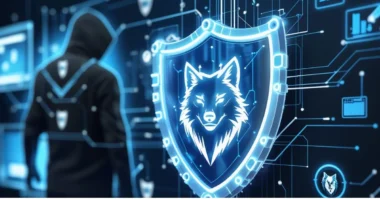Table of Contents
The NATO 2025 Strategy is not just an update; it’s a bold leap into the future of global defense. With the world facing rising security threats, NATO is reshaping its goals, partnerships, technologies, and even environmental policies. The strategy aims to adapt to complex global shifts while ensuring peace, protection, and preparedness across allied nations. From increasing defense budgets to adopting game-changing technologies, this blueprint is packed with powerful decisions that will reshape modern warfare and global stability.
What Is NATO 2025 Strategy Aiming to Achieve?
1. Key Goals and Long-Term Vision
NATO 2025 Strategy prioritizes collective strength, drives innovation, and builds resilience across the alliance:
- Strengthen collective defense across Europe and North America, reinforcing Article 5 commitments.
- Modernize armed forces with cutting-edge technologies like AI, autonomous systems, and enhanced surveillance.
- Build stronger partnerships with countries outside the traditional alliance, especially in the Indo-Pacific and Africa.
The strategy promotes a forward-thinking approach, ensuring that NATO remains a shield against new and emerging global threats.
2. Why 2025 Is a Turning Point for NATO
The year 2025 marks a critical moment in NATO’s evolution due to several urgent developments:
- Russia and China’s expanding military presence is pushing NATO to rethink its positioning and capabilities.
- Technology is evolving fast, requiring agile responses and innovation in military operations.
- Cyber warfare and Arctic competition are no longer theoretical; they’re present-day realities demanding action.
NATO’s 2025 pivot is designed to keep the alliance effective, relevant, and resilient in a multipolar world.
NATO’s Shocking Defense Spending Plans
1. The Shift from 2% to 5% GDP Targets
NATO has pushed its members for years to meet a minimum defense spending target of 2% of their GDP. Now, the NATO 2025 Strategy calls for an ambitious leap toward 5%. This new goal is split into:
- 3.5% for direct military capability, including advanced weapons, training, and infrastructure
- 1.5% for civil readiness and infrastructure resilience
This dramatic shift reflects the increasing demands of modern defense and the rising costs of innovation.
2. How Member Nations Are Responding?
Several countries are already stepping up:
- Germany is establishing a permanent brigade in Lithuania, signaling deeper eastern defense ties.
- Sweden and the Netherlands have pledged to meet or exceed the 5% benchmark, setting an example for others.
This unified response shows NATO’s determination to meet the new challenges head-on.
Emerging Tech Driving NATO 2025 Strategy
1. Game-Changing Innovations in Focus
The future battlefield is digital, fast, and unpredictable. NATO’s updated strategy includes bold steps to:
- Use AI for real-time battlefield decisions, logistics, and threat detection
- Implement quantum encryption to secure military communication against cyber breaches
- NATO is deploying autonomous drones and robotic systems to enhance surveillance and boost combat efficiency.
These technologies are no longer experimental; they’re becoming NATO’s front line of defense.
2. The Role of DIANA and Innovation Fund
NATO’s DIANA (Defence Innovation Accelerator for the North Atlantic) and its Innovation Fund are major engines of progress. These programs:
- Support startups and tech companies across NATO countries
- Fund critical projects in areas like biotech, quantum tech, and secure communications
- Create cross-border hubs to encourage shared development and deployment
These initiatives ensure that NATO stays ahead of the curve in defense innovation.
Strengthening Cyber and Hybrid Defense
1. Building Resilience Against Cyber Attacks
Cyber threats are becoming as serious as physical ones. The NATO 2025 Strategy introduces:
- Rapid-response cyber teams to immediately react to digital attacks
- Live joint exercises simulating massive, coordinated cyber threats on infrastructure and networks
This proactive stance aims to harden NATO systems against modern digital warfare.
2. Fighting Disinformation and Hybrid Warfare
Alongside cyber threats, NATO faces hybrid warfare propaganda, fake news, and political interference. In response, the strategy includes:
- New programs to counter disinformation and protect democratic institutions
- NATO works closely with media outlets and tech companies to dismantle fake campaigns and counter disinformation.
This reflects NATO’s recognition that future wars are fought both online and on the ground.
NATO’s Climate and Energy Security Push
1. Adapting Military Operations for Climate Risks
Climate change is no longer just an environmental issue; it’s a strategic one. NATO is:
- Integrating low-emission technologies into training and vehicle fleets
- Developing energy-resilient bases to reduce dependency on vulnerable energy lines
These changes reduce NATO’s environmental footprint and increase battlefield resilience.
2. Climate Threats as Security Risks
The NATO 2025 Strategy acknowledges climate threats as direct security risks. It’s addressing:
- Melting Arctic routes, which open new paths for military presence and potential conflict
- Natural disasters and heat waves are affecting troop readiness and logistics
This shows NATO is ready to tackle not only traditional threats but also those driven by the planet’s changing climate.
Global Partnerships Expanding NATO’s Reach
1. Indo-Pacific and Africa in the Strategy Map
As challenges grow beyond Europe, NATO is extending its reach. The 2025 plan emphasizes:
- Deeper ties with Asia and Africa, especially nations facing shared security threats
- Collaboration with countries like Japan, Australia, and the African Union
This expansion reflects a broader view of global stability.
Future Alliances and Strategic Agreements
NATO is not just making friends, it’s building meaningful partnerships. The strategy includes:
- Joint training programs to ensure interoperability
- Strategic dialogues and agreements that allow faster cooperation during crises
These moves aim to create a larger, more unified global security network.
Conclusion
The NATO 2025 Strategy is more than just a roadmap; it’s a powerful shift in how the alliance sees, prepares for, and responds to global threats. From bold budget increases to revolutionary tech adoption, climate resilience, and global partnerships, NATO is taking steps to remain the world’s most trusted security alliance. As we move toward 2025, this strategy signals a new era of strength, innovation, and unity.







